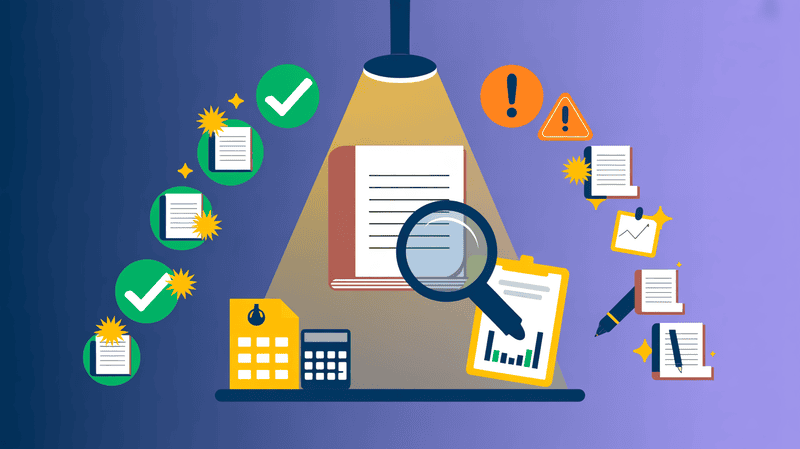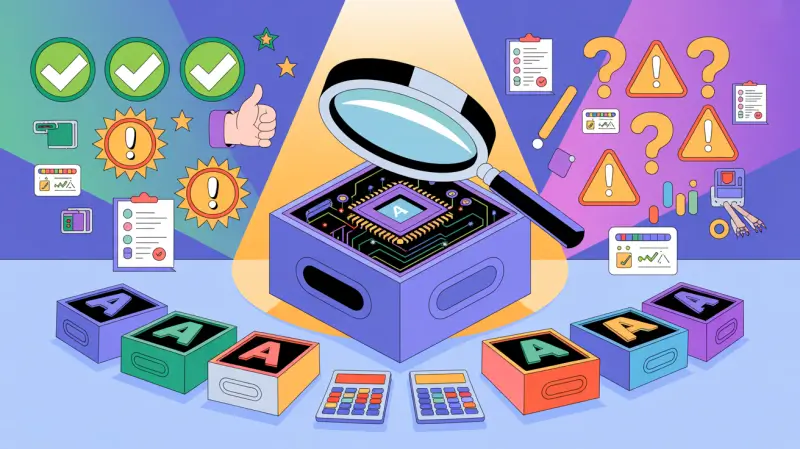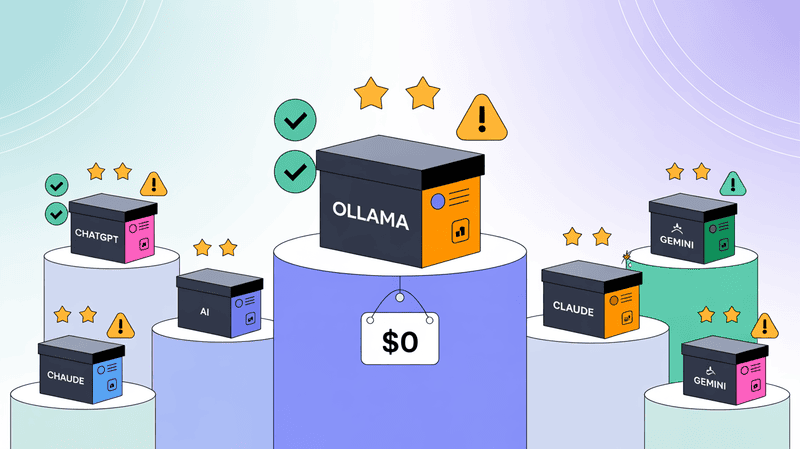According to McKinsey's latest research, 78% of organizations now use AI in at least one business function, up dramatically from 55% just a year ago, and 65% are regularly using generative AI.
This rapid adoption surge indicates that businesses recognize AI's potential, and it's high time they leverage customized AI solutions that understand their specific data and processes.
In this guide on training ChatGPT on your own data, we'll explore everything you need to know about changing a general AI tool into your personalized knowledge assistant that understands your specific business and information needs.
Here is what we are going to cover:
- Why you need to train ChatGPT on your own data
- Three main methods to train ChatGPT: Custom GPTs, Fine-tuning, and RAG
- Step-by-step process for ChatGPT Projects implementation
- Complete fine-tuning workflow with data preparation guidelines
- How to create high-quality datasets in proper JSON format
- Major limitations of ChatGPT Projects and Fine-tuning approaches
- Elephas - a powerful Mac AI assistant that overcomes these limitations
- Comparison of costs, technical requirements, and capabilities across all methods
By the end of this article, you'll understand which training method works best for your specific needs, budget, and technical skills, plus discover a superior alternative that combines the best features without the typical restrictions.
Let's get into it.
Why do you need to train ChatGPT on your own data?
ChatGPT has broad knowledge about many topics, but it does not know about your specific business, documents, or unique information. Training it on your data makes the AI more useful and accurate for your needs.
The main reason is getting better answers. When ChatGPT works with your data, it can give responses that match your style, follow your rules, and use your specific information. This means fewer wrong answers and more helpful results.
Your data also contains details that ChatGPT has never seen before. Company policies, internal processes, customer information, and specialized knowledge are not part of the AI's original training. Adding this information helps ChatGPT understand your specific situation better.
Key Benefits:
- Better accuracy - Answers come from your verified information instead of general internet data
- Consistent style - The AI learns to write and respond the way you want
- Private information - Your sensitive data stays within your control
- Faster workflows - No need to explain background information every time
- Specialized knowledge - Works with industry-specific terms and concepts
- Updated information - Uses your current data instead of older training information
Training ChatGPT on your data turns a general AI tool into a specialized assistant that understands your specific needs and works better for your tasks.
How can you train ChatGPT on your own data?
You can teach ChatGPT to work with your specific data using three main methods. Each method works differently and fits different needs. The choice depends on your goals, budget, and technical skills.
Available Training Methods:
Custom GPTs (ChatGPT Projects) This method lets you upload files and create a personal AI assistant. You can add documents, spreadsheets, or text files directly to ChatGPT. The system reads your data and answers questions based on it.
- Works with files up to 20MB each
- No coding skills needed
- Quick setup process
- Limited to ChatGPT Plus users
Know more about ChatGPT Projects
Fine-tuning This approach trains the AI model using your data. The system learns patterns from your information and becomes better at tasks you want. OpenAI offers this service through their API.
- Changes the model's behavior permanently
- Requires technical knowledge
- Costs more money
- Works best for specific tasks
Fine-tune when you want the model to behave a certain way (style, format, workflow). Don’t fine-tune when you want the model to remember lots of facts from big/ever-changing documents—use RAG (upload/index files) instead.
RAG (Retrieval-Augmented Generation) This method connects ChatGPT to a database of your information. When you ask questions, the system finds relevant data first, then creates answers using that information.
- Keeps data separate from the AI model
- Updates easily when data changes
- Needs programming skills
- Good for large amounts of information
- Need technical setup and a RAG system
Method | Best For | Cost | Technical Skills | Data Size |
Custom GPTs | Small businesses, personal use | Low | None | Small to medium |
Fine-tuning | Specific tasks, consistent style | High | Intermediate | Medium |
RAG | Large databases, changing data | Medium | Advanced | Large |
How to use ChatGPT Projects
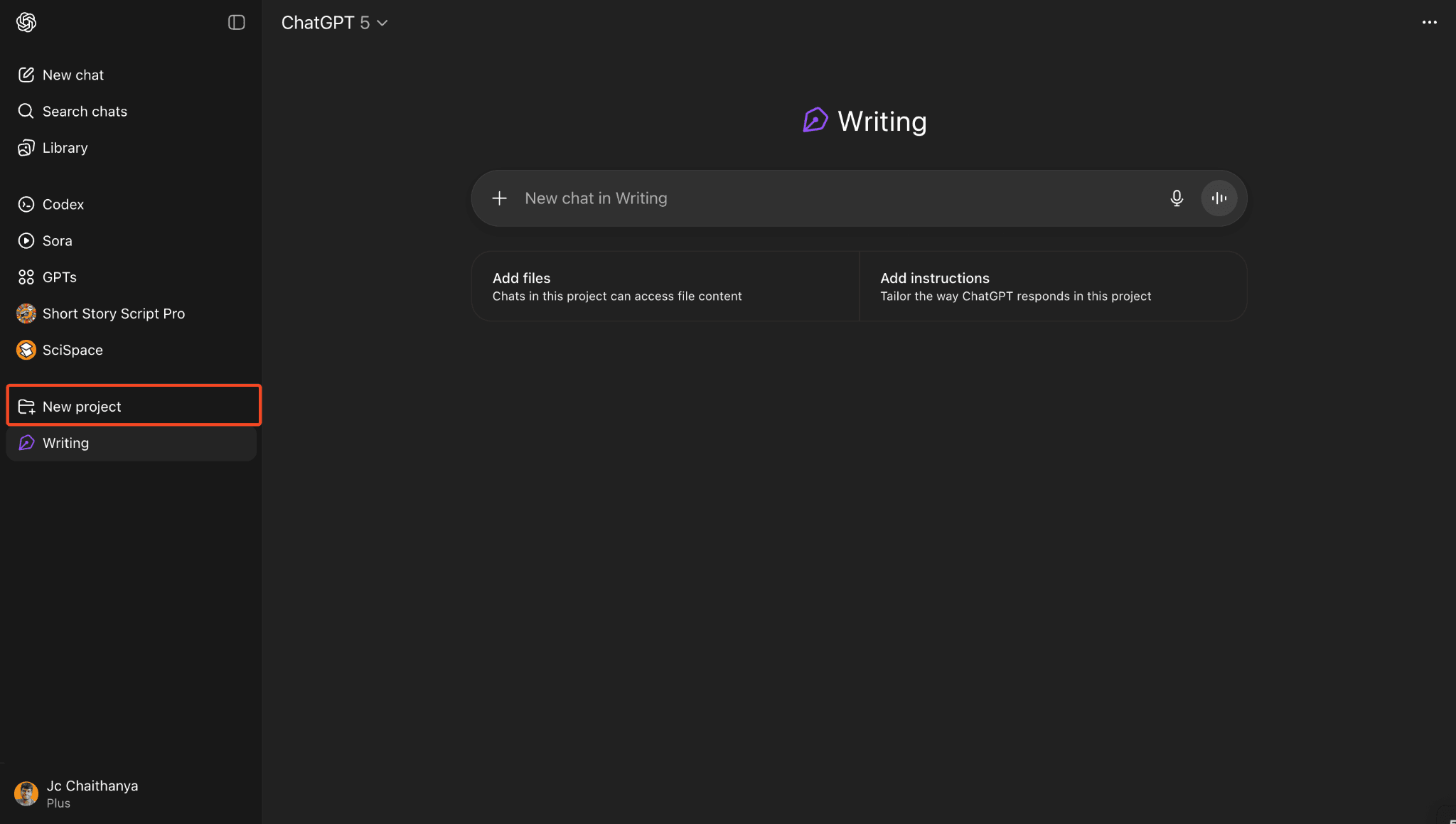
To access ChatGPT projects, you can select "new project" in the left panel and later on add files, documents, etc., into it and chat with it. Whenever you chat inside the project, ChatGPT references data from the uploaded documents.
Moreover, you can also set custom instructions overall for each ChatGPT project, specifying how ChatGPT should respond or give answers in each project for different use cases. But ChatGPT projects are only available for Plus users with pricing at $20/month.
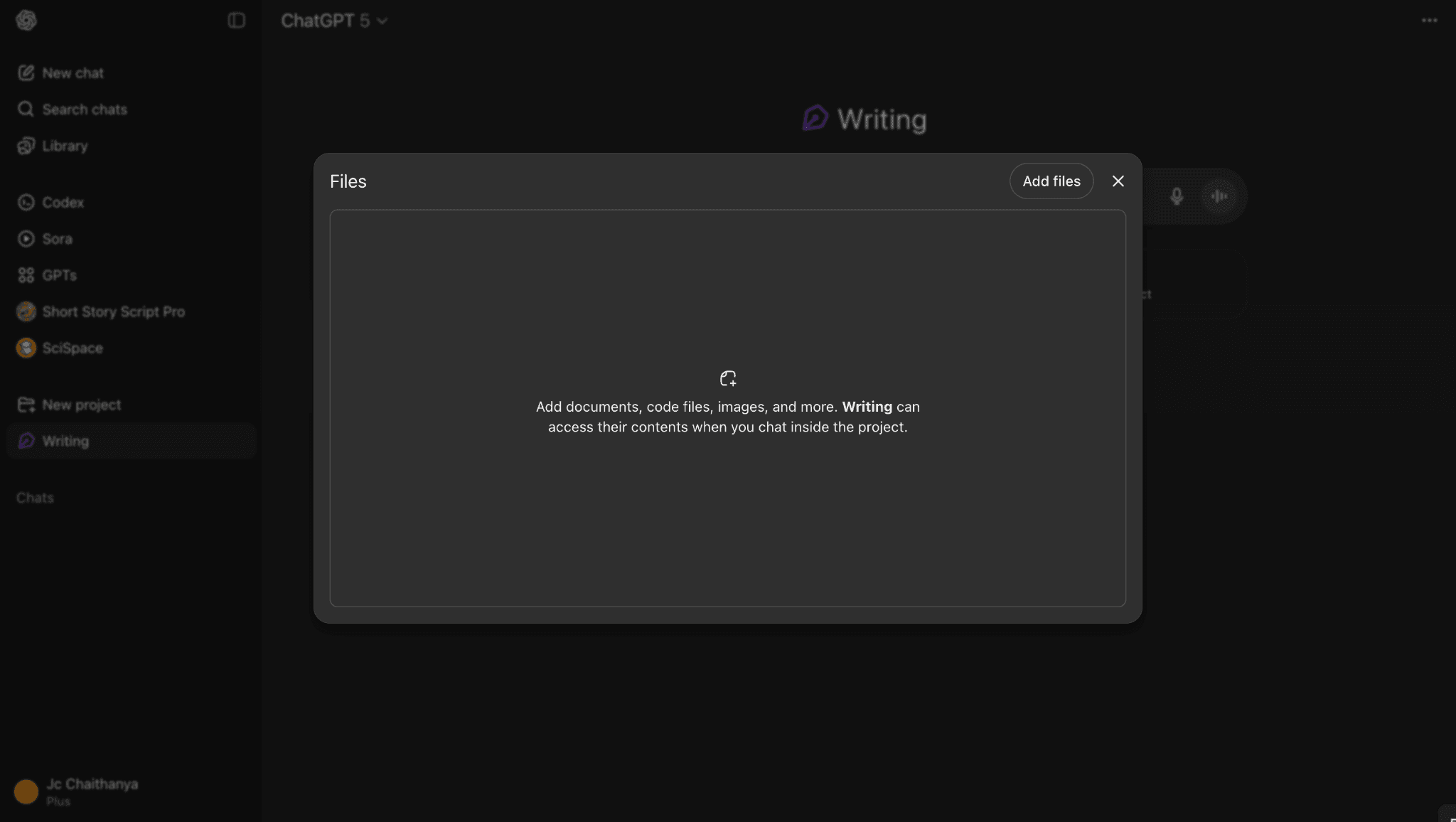
Know more about ChatGPT Projects
Step by Step Process to Finetune ChatGPT
Fine-tuning ChatGPT lets you train the model to work better for your specific needs. This process teaches the AI to respond in ways that match your style or handle tasks that matter to you.
Note: This process does not include creating data or converting it into a Jsonl file.
Step 1: Go to the OpenAI website and hover over the login option; then you get a dropdown of ChatGPT, API Platform, and Sora. Select the API Platform option.
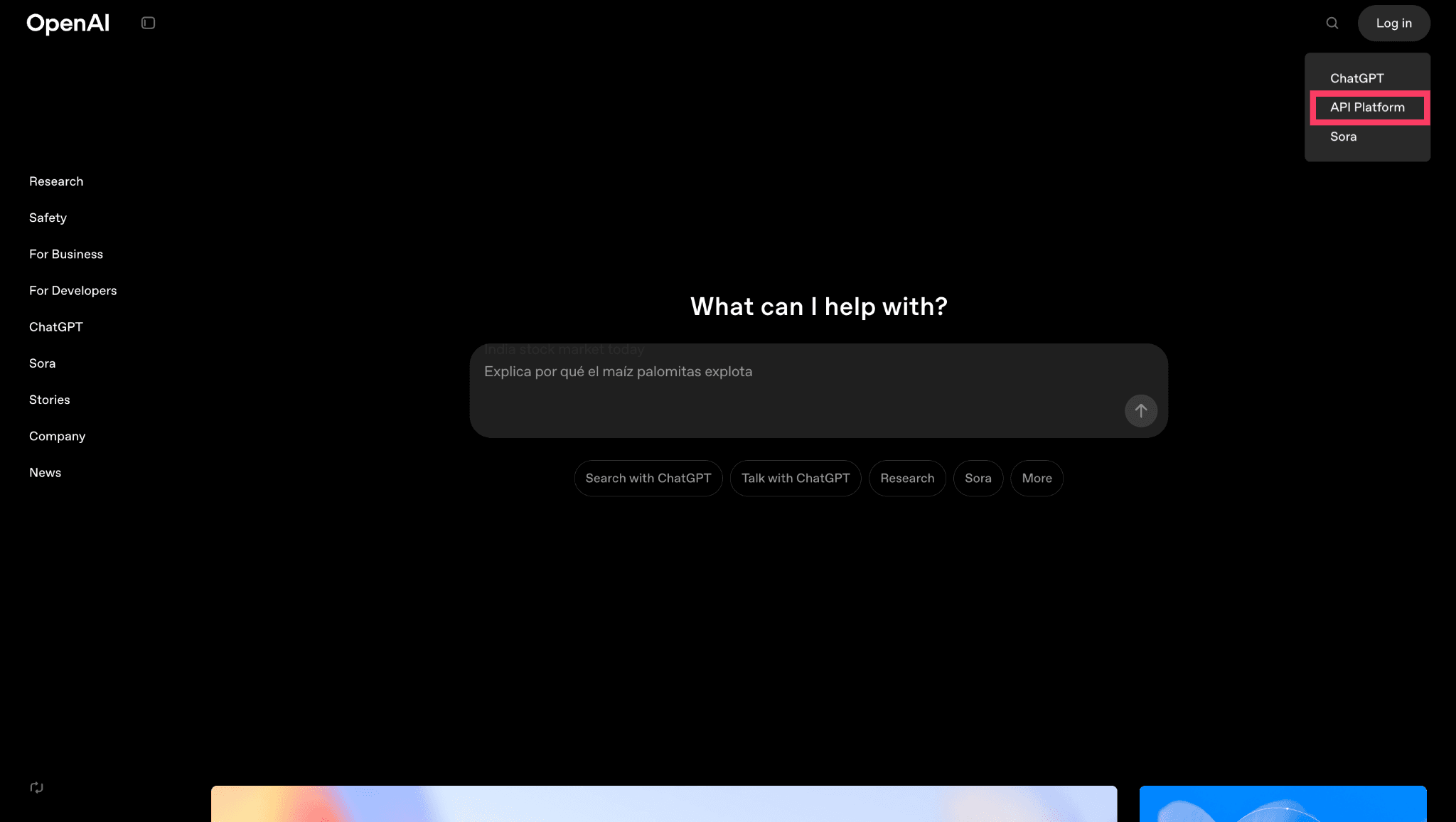
Step 2: Then you will be directed to the dashboard of the API platform. On the left-hand side, you can locate the "Fine-tuning" option for ChatGPT, select it, and click on create.
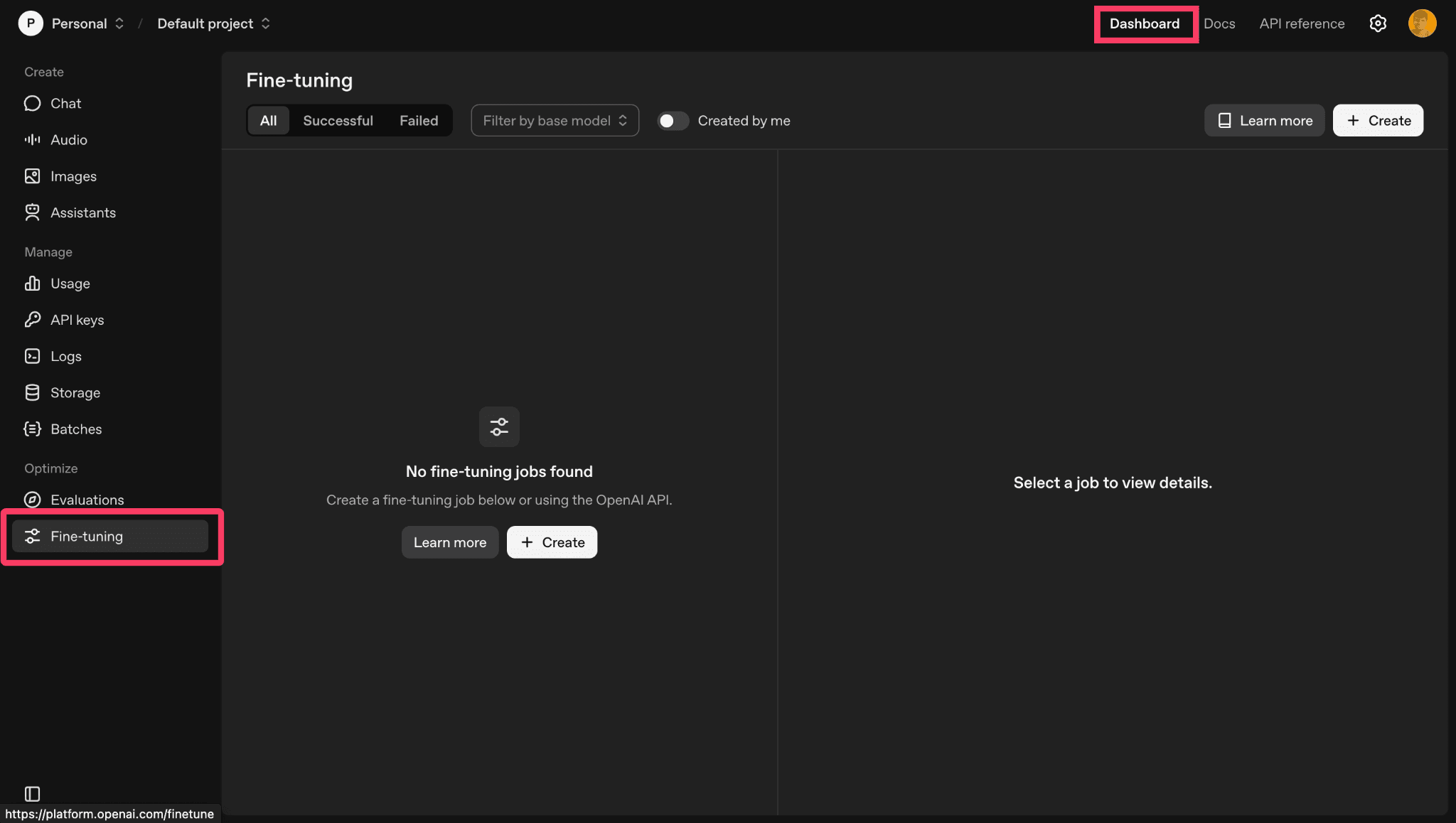
Step 3: Then you get all the options for fine-tuning, such as the model to use, a suffix, and an option to upload the JSON file.
If you are new and don't know much about the settings, then choose your preferred model like GPT-4o, GPT-3.5, etc., and give a suffix (a name to the fine-tuned model) and upload the JSON file (which has training data) and don't touch any other setting options.
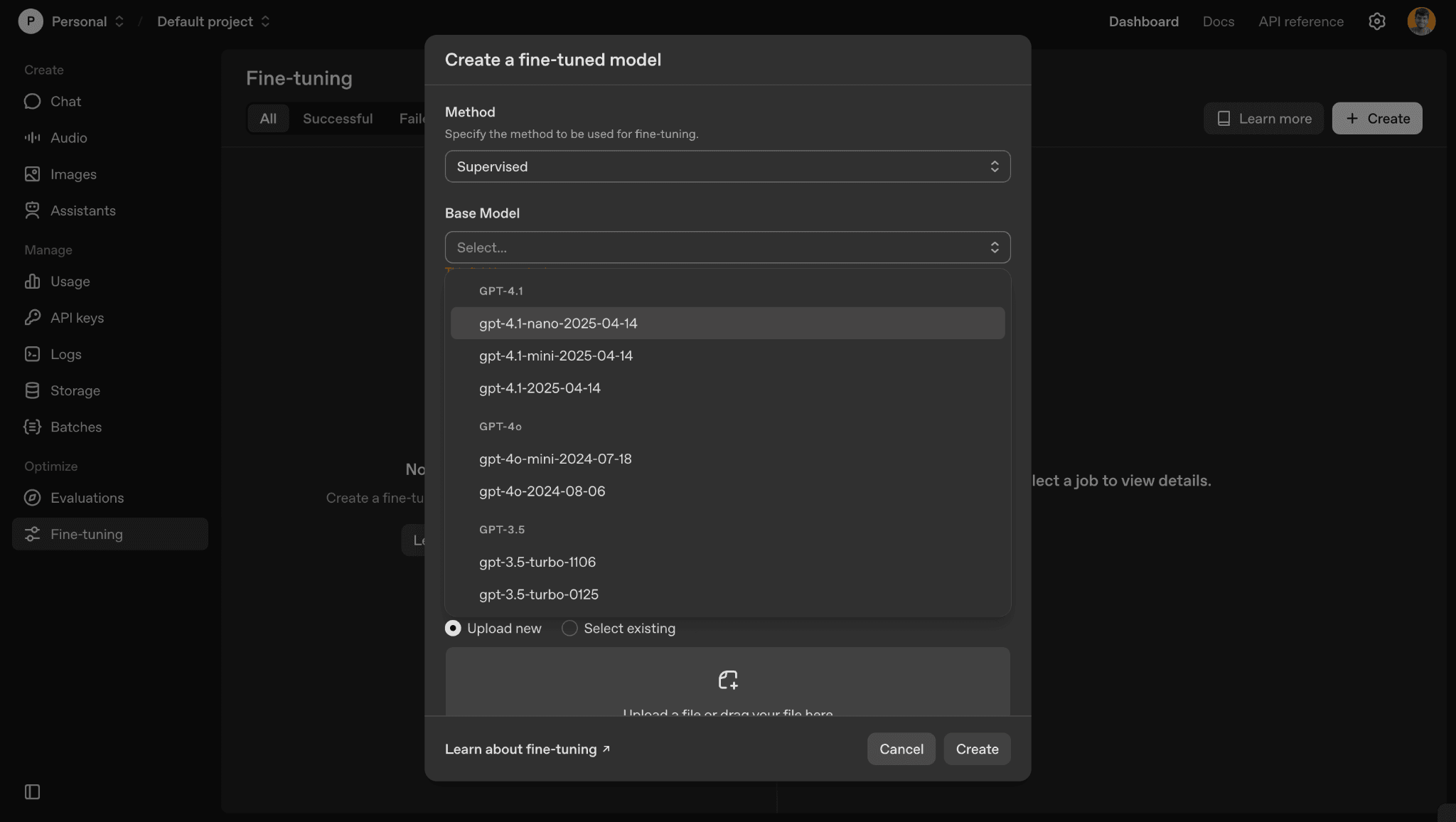
Step 4: Once you upload your JSONL file, you can click on create, and the fine tuning will be processed.
Note: Make sure your training data has at least 10 examples; if there are fewer than 10 examples, the processing will fail.
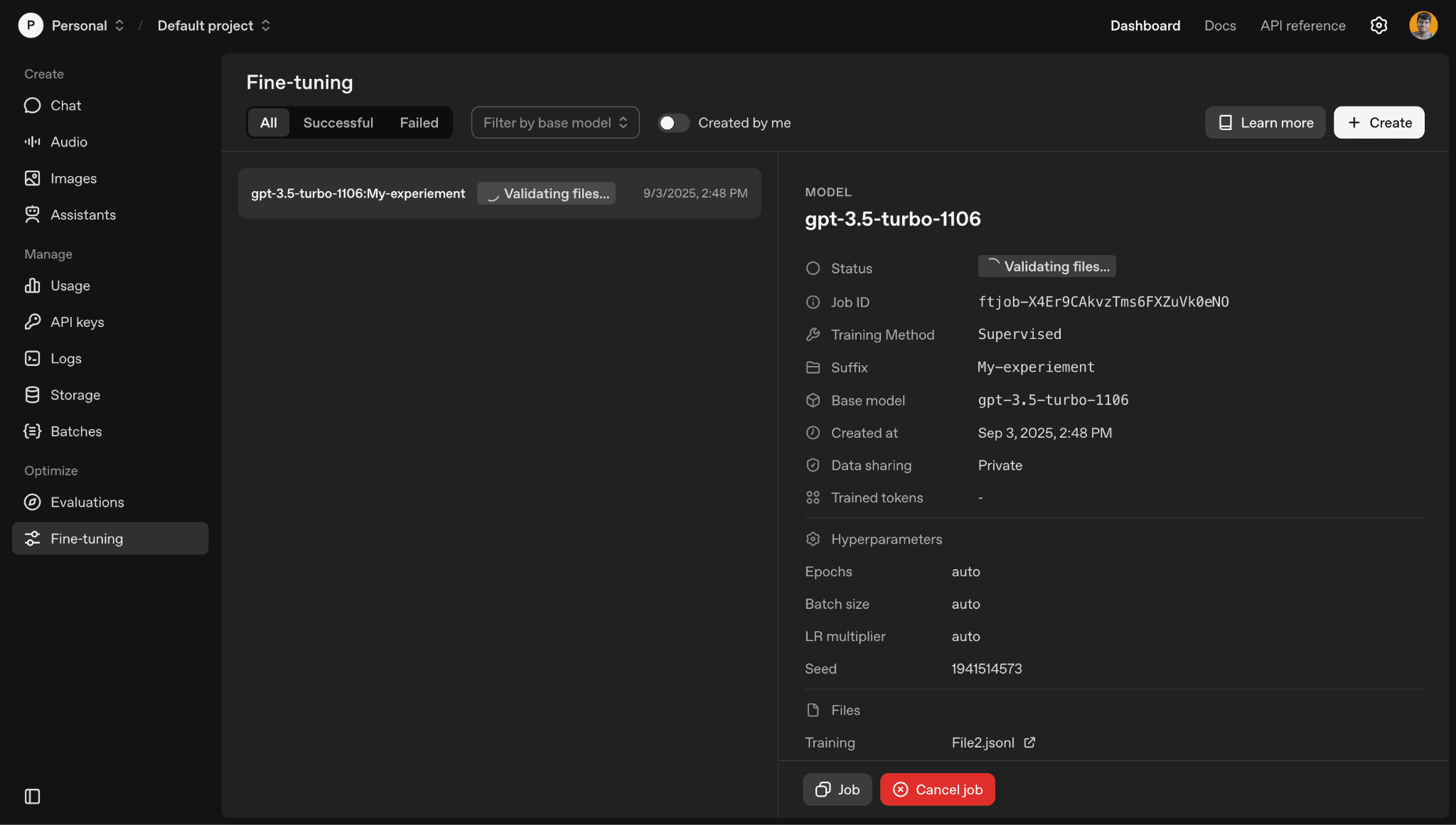
Step 5: Once the model is fine-tuned, you can click on the playground and start using the model. You can also see the side-by-side comparison of a fine-tuned model (right panel) and a general model (left panel).
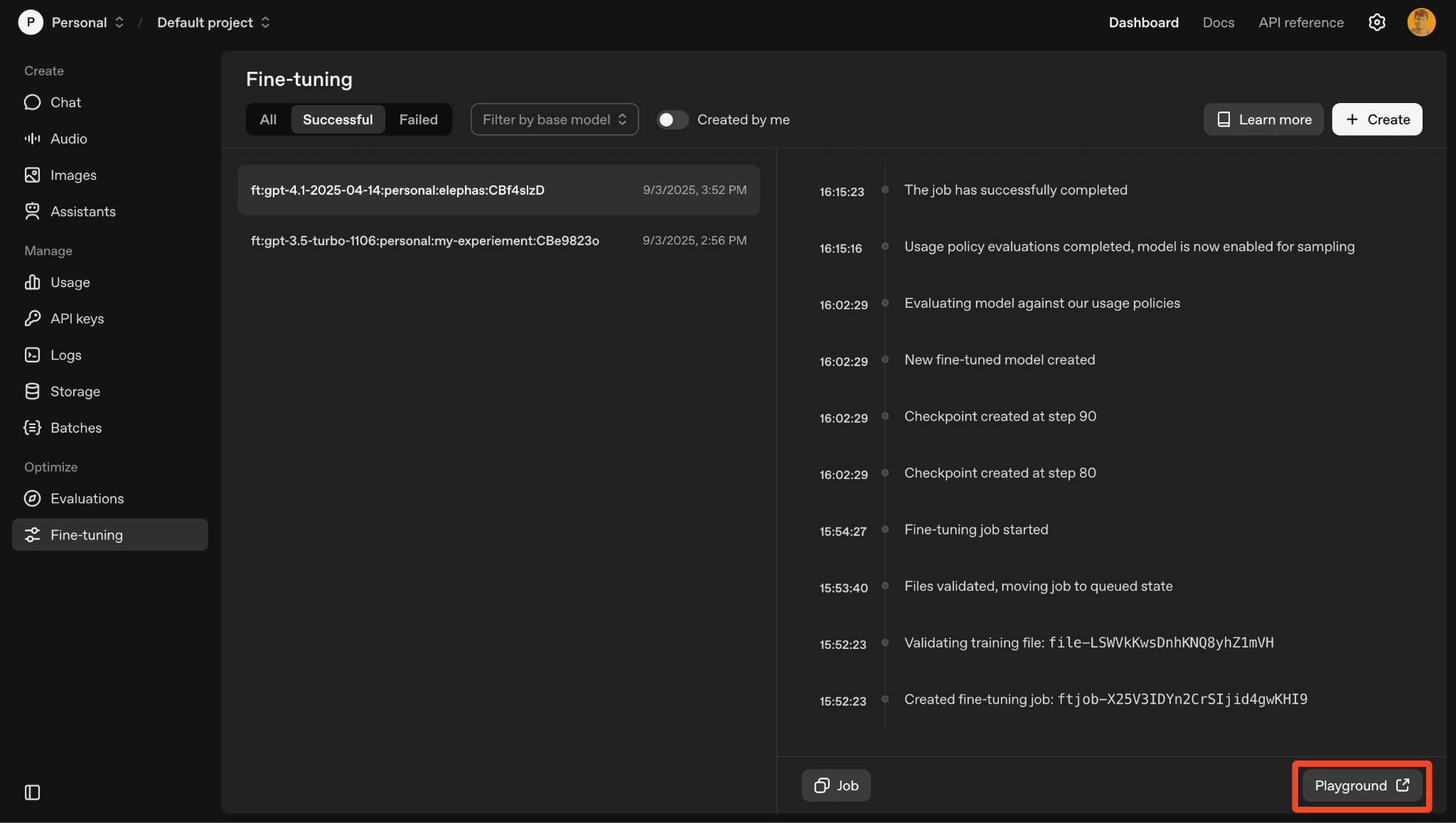
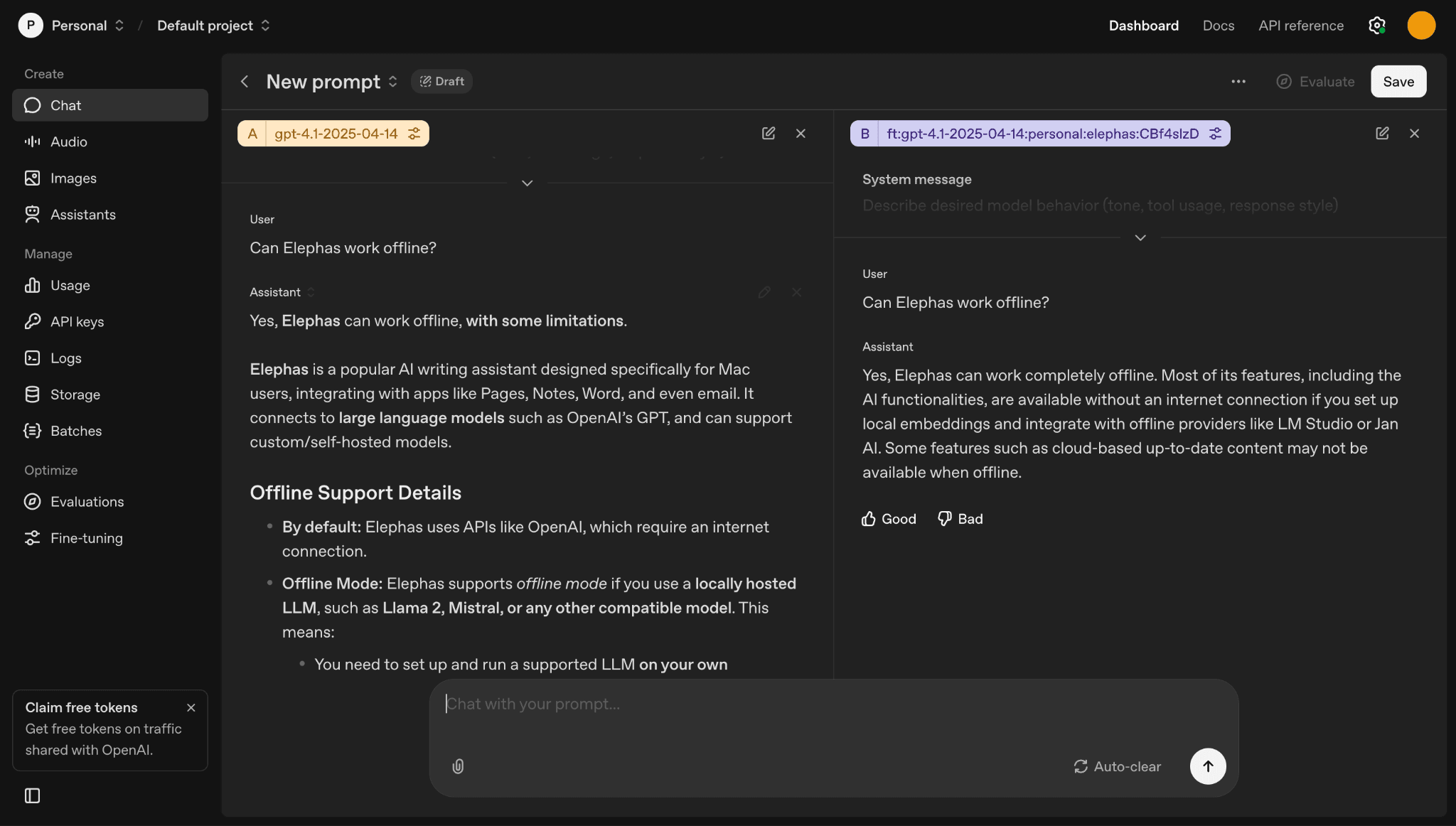
How to Prepare Data for ChatGPT Fine Tuning?
Creating a good dataset is the most important step in training ChatGPT on your data. Your dataset quality decides how well your trained model will work. You need to be careful and follow the right steps to get good results.
The basic structure uses three parts for each training sample. You need a system message that tells the AI how to behave, a user message that shows what people will ask, and an assistant message that shows the perfect response you want.
Dataset Requirements:
- Minimum 10 examples - OpenAI needs at least 10 training samples to start fine-tuning
- Consistent format - Every example must follow the same structure exactly
- Quality over quantity - Better to have 10 great examples than 50 poor ones
- Clear instructions - System messages should give specific behavior guidelines
- Realistic conversations - User messages should match real questions people will ask
Example Template Format:
{"messages": [{"role": "system", "content": "You are a helpful customer service agent"}, {"role": "user", "content": "What are your business hours?"}, {"role": "assistant", "content": "We are open Monday through Friday from 9 AM to 6 PM EST"}]}
{"messages": [{"role": "system", "content": "You are a helpful assistant that provides accurate information about Elephas, a Mac knowledge assistant and AI writing tool."}, {"role": "user", "content": "What is Elephas?"}, {"role": "assistant", "content": "Elephas is a powerful Mac knowledge assistant that changes how you capture, organize, and access information. It helps Mac users build and manage their personal knowledge ecosystem with AI-powered features like Super Brain, Smart Write, and workflow automation."}]}
Creating Your Jsonl File:
- Open Visual Studio Code and create a new file.
- Save it with a .jsonl extension in Json lines format.
- Each line should contain one complete training example. Make sure there are no extra spaces or empty lines between examples. The file must be compressed with no formatting breaks.
Check your syntax carefully before uploading. One small mistake can break the entire training process.
Limitations of ChatGPT Fine-tuning and Projects
Both ChatGPT fine-tuning and projects have important limits that you need to know before choosing which method to use
ChatGPT Fine-tuning Limitations:
Fine-tuning works best for specific tasks with small amounts of data. It cannot handle large files like PDFs or process big datasets effectively. This method is designed for teaching ChatGPT to write in a particular style or behave like a specific person, not for feeding it lots of information.
Creating training data for fine-tuning is a difficult and time-consuming process. You must format everything perfectly in JSON lines format. Even one small mistake in your data can cause the entire training process to fail completely.
- Works only with small, specific datasets
- Cannot process large documents or files
- Requires perfect data formatting
- Small errors cause complete failure
- Time-consuming data preparation process
- Best for style and behavior changes, not information storage
ChatGPT Projects Limitations:
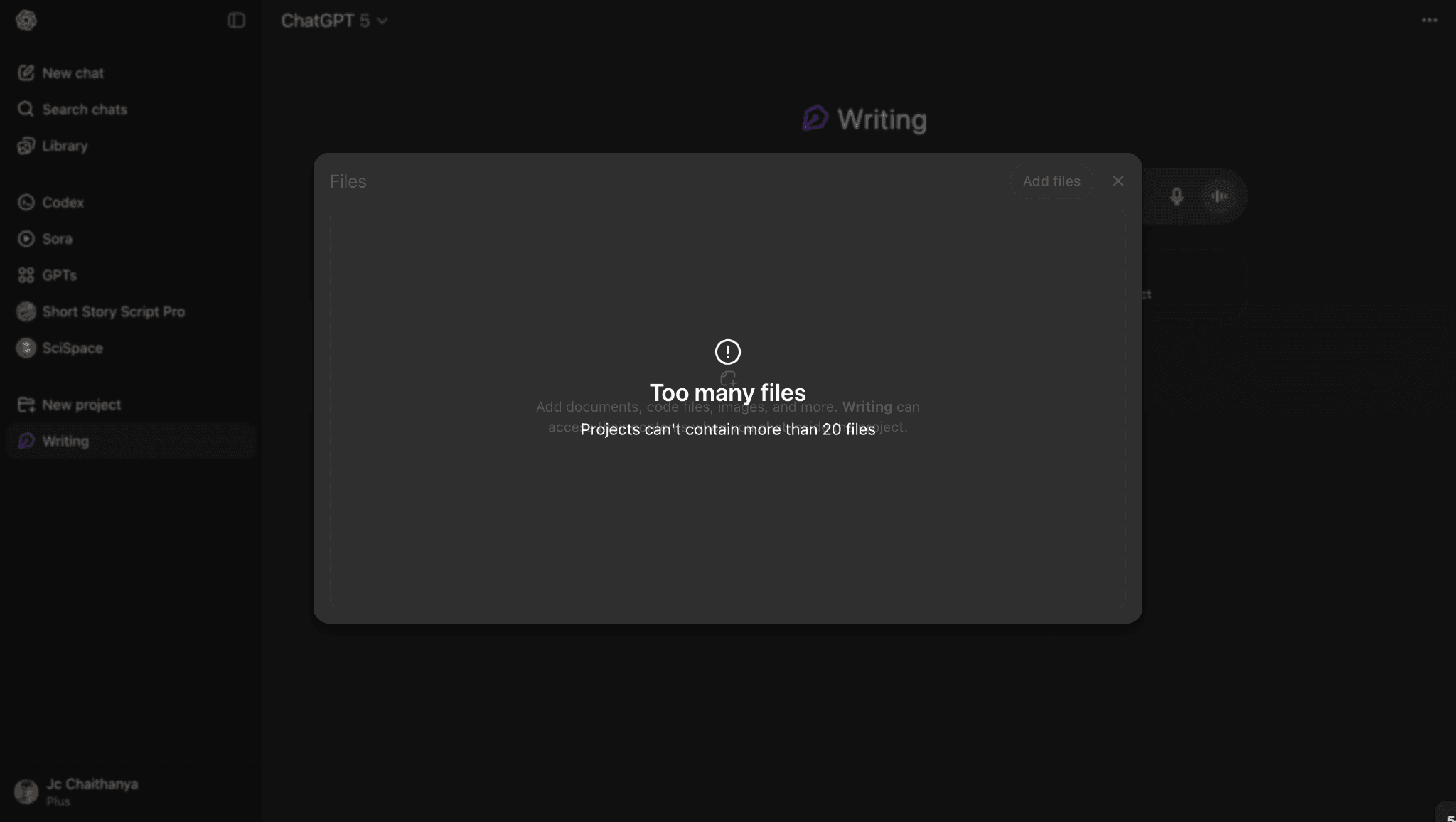
ChatGPT Projects are easier to set up than fine-tuning, but they have strict file limits. You can only upload 20 files per project, which restricts how much information you can include.
The system only accepts text documents and cannot work with webpages or YouTube videos. Your uploaded data stays static and does not update automatically when your original source files change.
- Maximum 20 files per project
- Only text documents allowed
- No webpage or video support
- Data does not auto-update
- Static information storage
- Limited file size and format options
Both methods have clear trade-offs between ease of use and functionality, but there is a far better method to train ChatGPT on your data and even have some integration features, which is using RAG (Retrieval-Augmented Generation).
Elephas: Easy and Efficient way to Train ChatGPT on your own data
We have seen both ChatGPT projects and fine-tuning methods for training on your own data. However, both approaches have significant limitations that make them less than ideal solutions. The better technique is RAG (Retrieval Augmented Generation), but building your own RAG system is a very technical process that requires programming skills and can be costly to implement.
RAG works by storing your large dataset in a searchable database. When you ask a question, the system first finds relevant information from your data, then uses that specific information to generate an accurate answer based on your actual content.
You can use a tool like Elephas which is built on RAG technology and offers far better features than ChatGPT Projects and fine-tuning combined. Even if you have the technical skills and budget to build your own RAG system, Elephas provides additional features that enhance the RAG experience significantly.
Elephas integrates seamlessly with popular note-taking tools including Apple Notes, Notion, Obsidian, DevonThink, Roam Research, and Google Docs. This means you can easily connect your existing knowledge systems without manual file transfers or complicated setup processes.
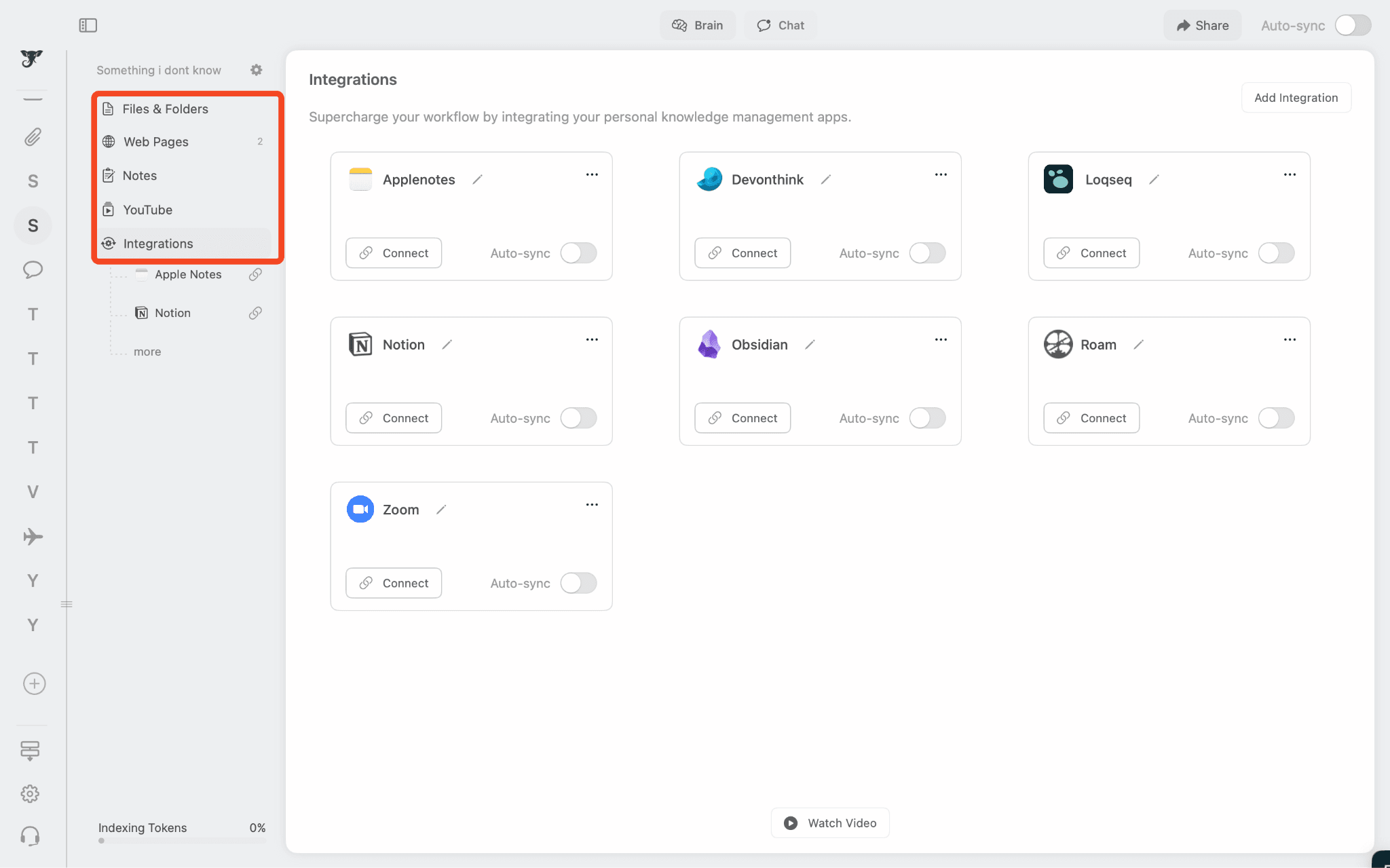
For privacy-conscious users, Elephas offers complete offline functionality using local LLM models. You can run the entire system without internet connection, ensuring your data never gets sent to cloud storage services like it does with ChatGPT projects and fine-tuning.
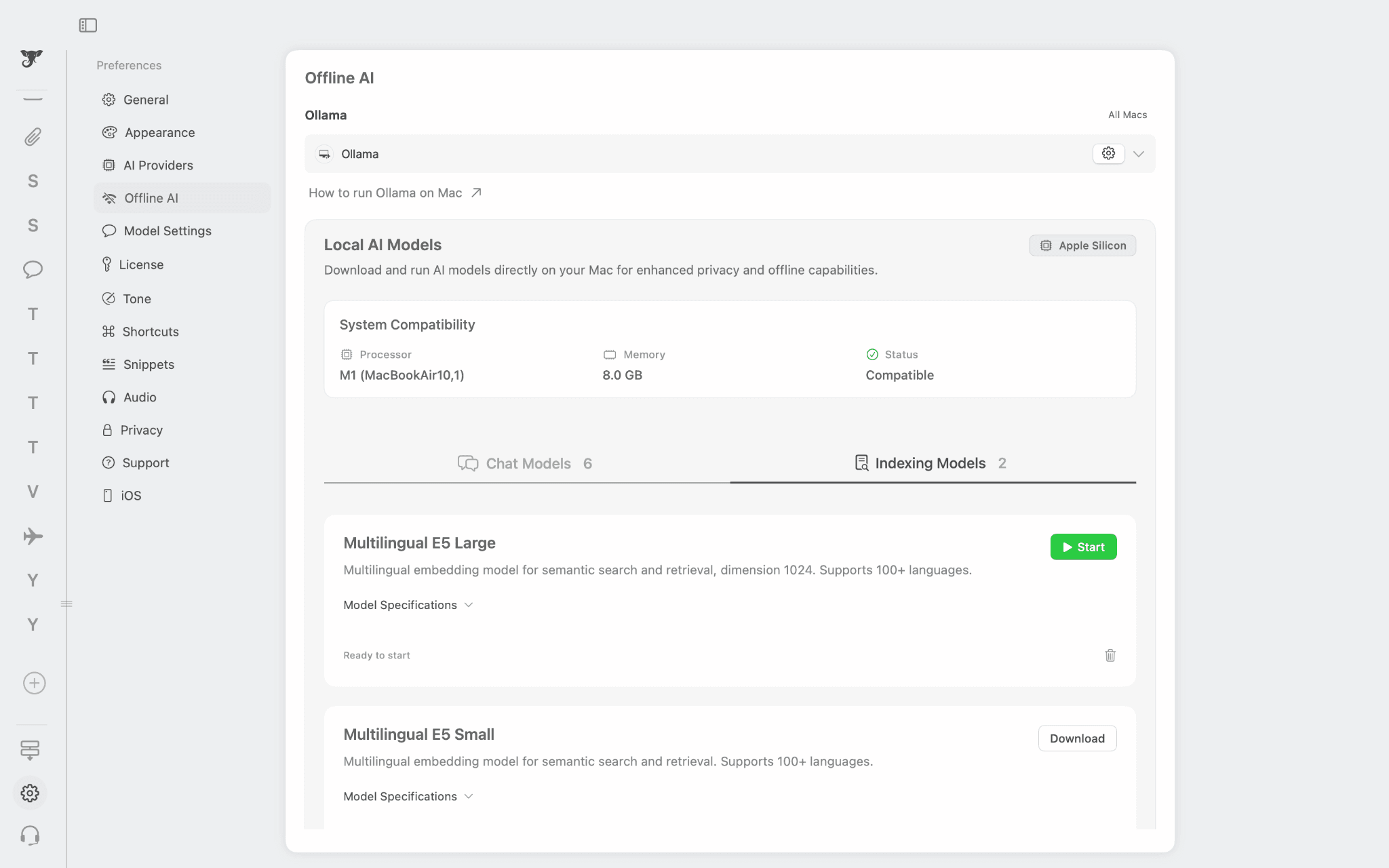
However, if you like ChatGPT capabilities, you can also run Elephas with an OpenAI API key. This means you are training your data for ChatGPT and also getting additional features like integration. Not only OpenAI, but you can also use Claude, Gemini, Deepseek, and many other AI providers to run Elephas.
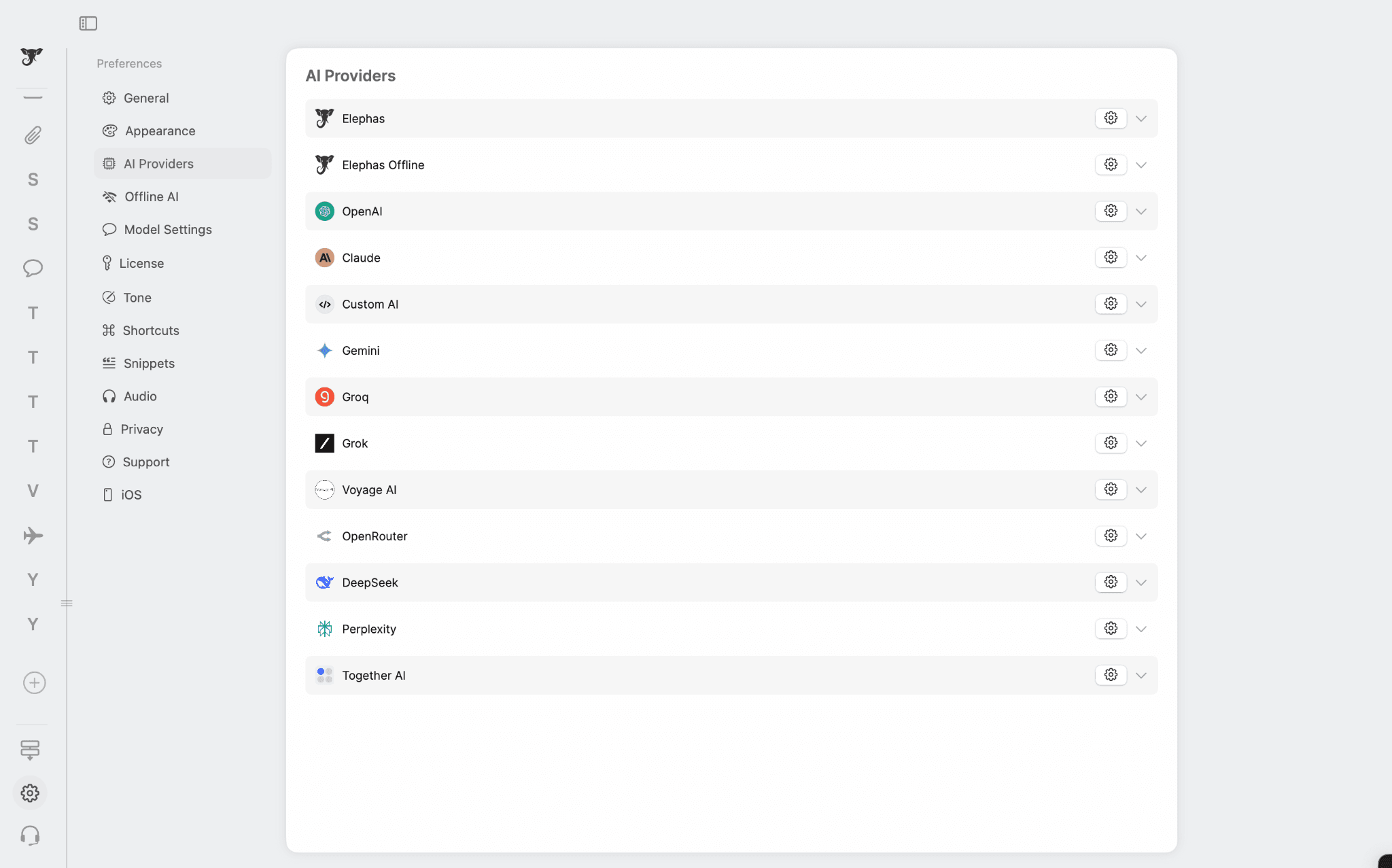
Unlike ChatGPT projects that limit you to 20 files, Elephas can process thousands of files including YouTube videos, webpages, documents, and various other formats. It also creates diagrams and includes workflow automation features that help you automate repetitive tasks and streamline your work processes.
Moreover, if a YouTube video or webpage you added gets updated at source, the youtube video or webpage you have in Super Brain will also get updated. So you don't have to worry about regularly updating old content.
Additional Writing Features:
- Smart Write - Generate high-quality content from simple prompts and keywords
- Continue Writing - Automatically continue your writing when you get stuck
- Grammar Fixes - Detect and correct grammar mistakes and spelling errors
- Smart Reply - Generate personalized responses for emails and messages
- Content Repurposing - Transform existing content for different platforms
- Personalized Tones - Train the system to write in your unique style
- Snippets - Create custom templates for repetitive writing tasks
- Rewrite Modes - Choose between friendly, professional, viral, or clear writing styles
Conclusion
Training ChatGPT on your own data makes a real difference. You get answers that actually fit your workflow, respond the way you want, and use information that matters to you. We looked at three ways to do this: ChatGPT Projects, Fine-tuning, and RAG systems. But each one has problems that get in the way.
ChatGPT Projects only let you upload 20 files, and they have to be text documents. Fine-tuning is picky about how you format your data, and it works better for teaching ChatGPT to act a certain way rather than remembering lots of facts. If you want to build your own RAG system, you need serious technical skills and investment to make it happen.
These problems make the standard methods frustrating for most people who want to train ChatGPT properly. You run into file limits, technical headaches, and constant maintenance issues that make the whole process more trouble than it's worth.
If you want something that actually works without all these headaches, tools like Elephas give you RAG power without needing to be a programmer. You can upload as many files as you want, connect it to your favorite apps, run it offline for privacy, and get extra writing tools that ChatGPT Projects and fine-tuning just don't offer.

